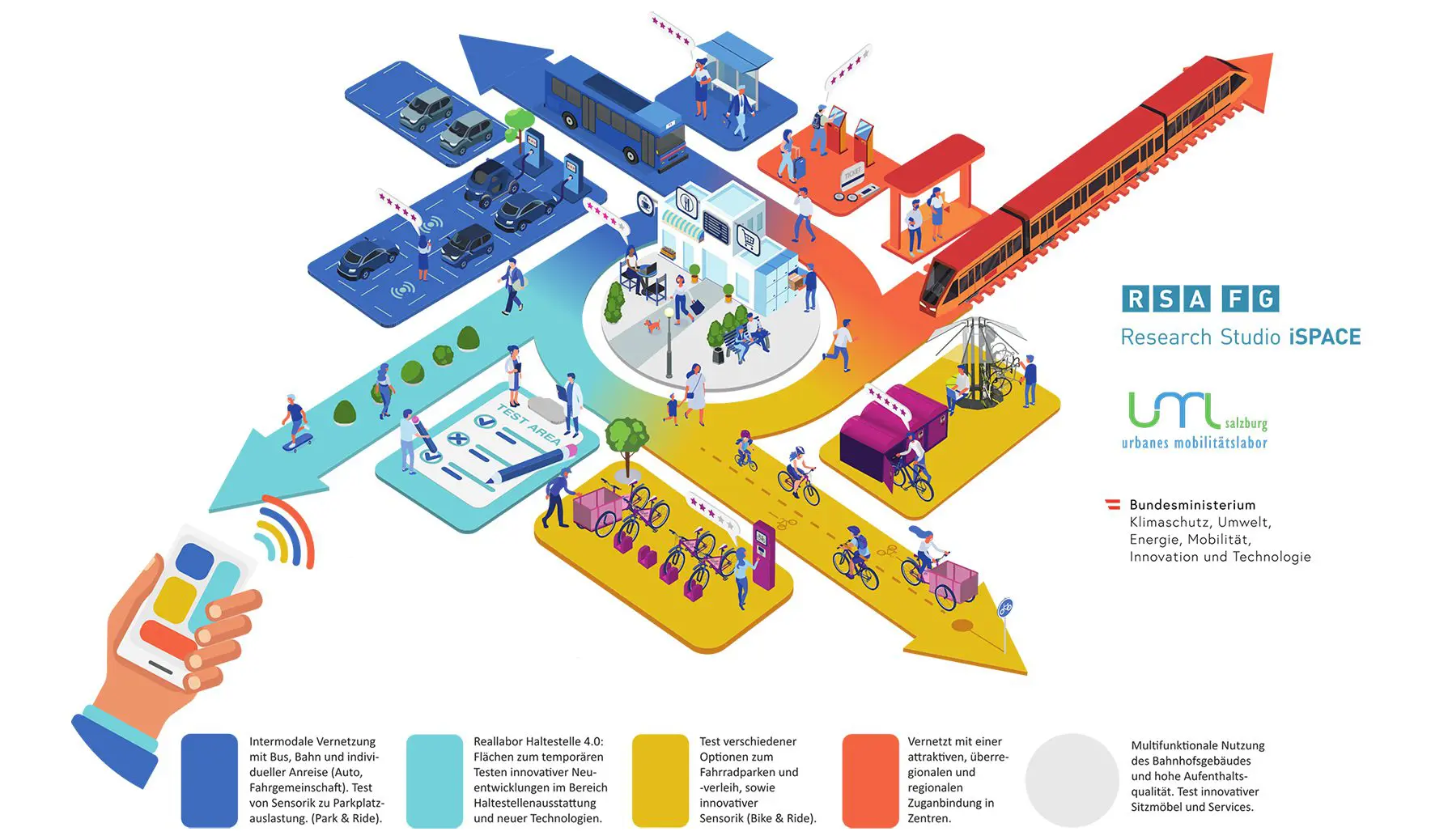Research Studio iSPACE coordinates and conceptualizes the development of a laboratory stop for the Flachgau region in the province of Salzburg to better connect rail, bus, bike, car and information services.
In 2018 the Research Studio iSPACE was by UML Salzburg awarded the contract for the ongoing coordination and coordination with stakeholders, as well as the concept development and support of the implementation of selected components for the stop 4.0. As coordinator the Research Studio iSPACE works together with the urban mobility laboratory Salzburg, the federal state of Salzburg, department 6, ÖBB Infra, the Salzburger Verkehrsverbund GmbH, the municipality of Neumarkt am Wallersee, and the regional association Salzburger Seenland at the UML stop 4.0.
This is how Dr. Thomas Prinz, head of the research studio iSPACE, describes their current project UML-Stop 4.0, which will shape and change the mobility behaviour of the future.
“We want to explore how we can bundle mobility and thus bring people to their destinations and into the city in a more environmentally friendly way. The station is to be a real laboratory for testing new concepts, prototypes and technologies. Companies, start-ups as well as public authorities are to benefit equally from it,” explains Dr. Prinz.
At Neumarkt-Köstendorf station, the stop 4.0 will create an attractive multimodal mobility hub in the region. The aim is to build a stop of the future in a laboratory setting, in order to be able to test innovations using a real infrastructure and to provide digital data and data interfaces for R&D projects:
- In the real laboratory, technical innovations, digital services, stop equipment and sensor technology can be tested on designated areas and their transferability to other locations evaluated.
- Companies have access to an environment with a simplified request for tests, so the stop also offers a testing area for start-ups.
- The stop 4.0 offers space for scientific studies on the social acceptance and change of use of new solutions as well as for research on multimodal mobility behaviour.
- Data from relevant components of the stop are provided and networked for monitoring and mobility services.
In addition, innovative new developments are tested directly at the stop 4.0:
- By equipping the stops, such as the installation of pick-up boxes, parcels from regional providers can be easily deposited and picked up directly on the way home.
- The possibility of Park & Ride, as well as Bike & Ride through an online check of the availability of Park-and-Ride parking spaces as well as bike boxes makes it possible to find out at home whether there is a parking space for the car or whether one switches to the bike in good weather. Innovative solutions and services for bicycle parking, as well as a continuous monitoring of the utilization of parking facilities are offered directly here.
- In addition, the quality of stay at the mobility hub is specifically strengthened by innovative seating and information services.
The 4.0 stop enables the bundling of mobility as well as new services in an unprecedented way. All findings from stop 4.0 serve as a basis for future projects and can thus be transferred to similar locations and new additional innovative stops.
These media reported on stop 4.0:
Salzburger Nachrichten on 25 April 2020: “In Neumarkt am Wallersee entsteht ein vernetzter Bahnhof”


